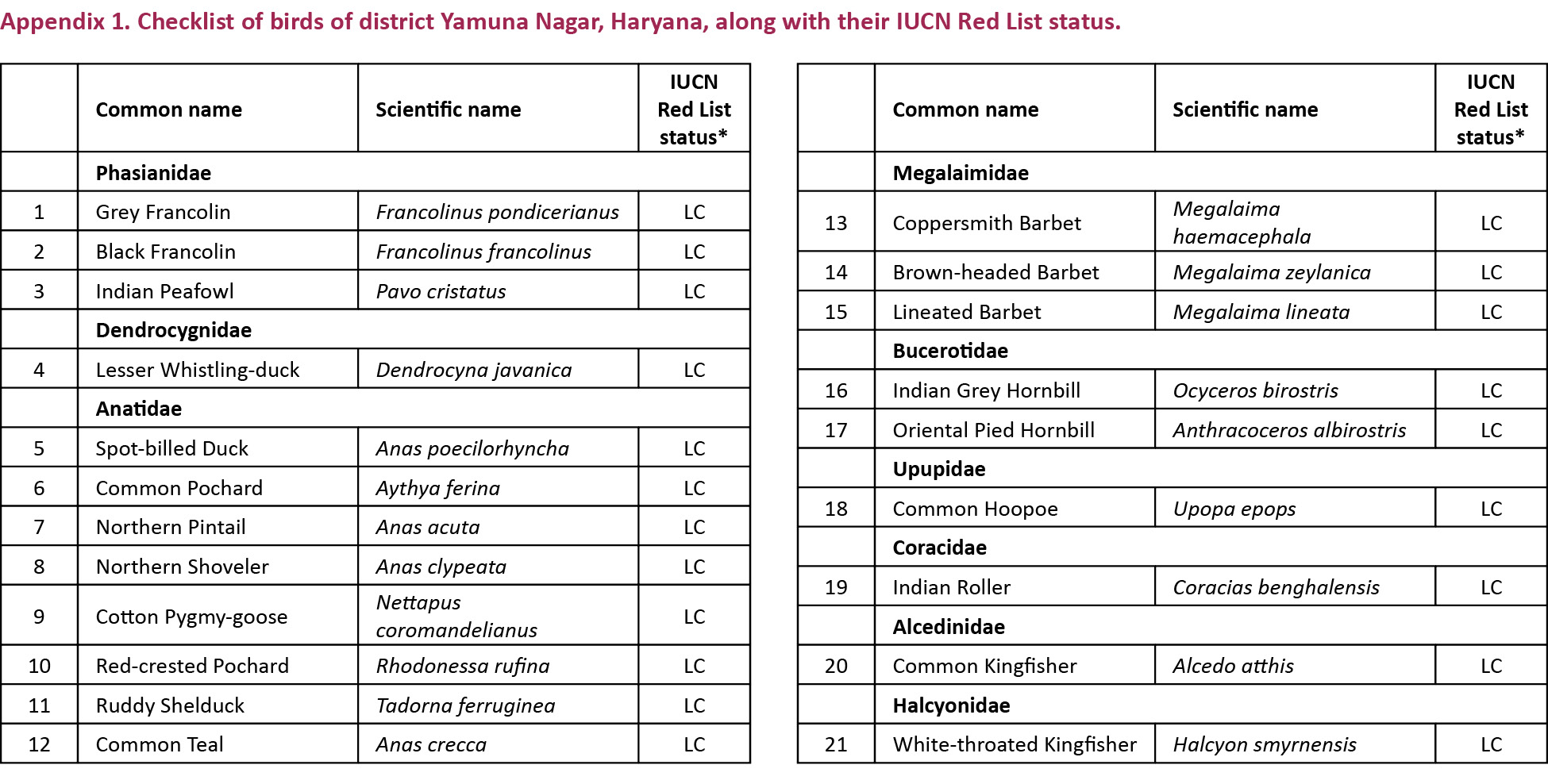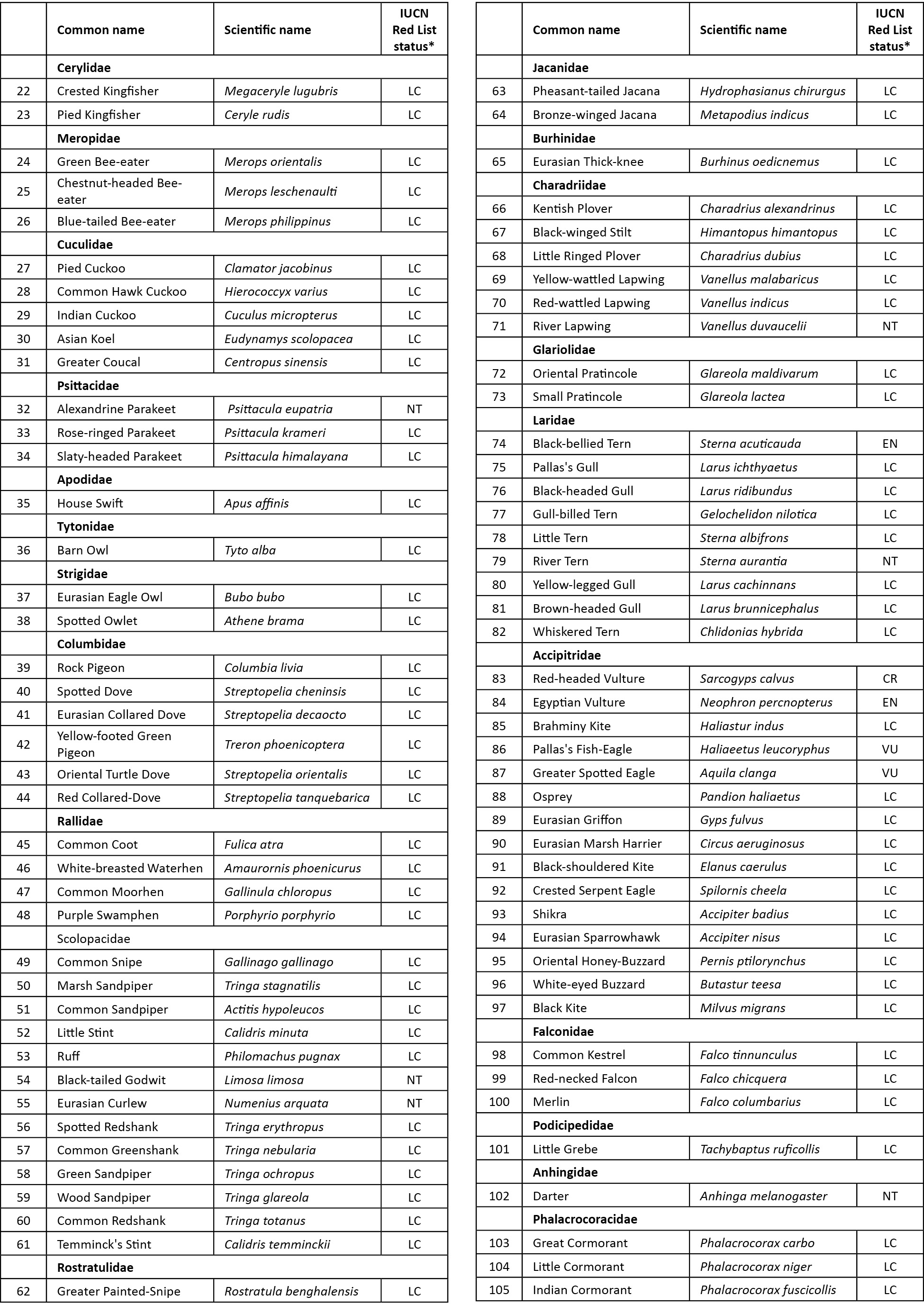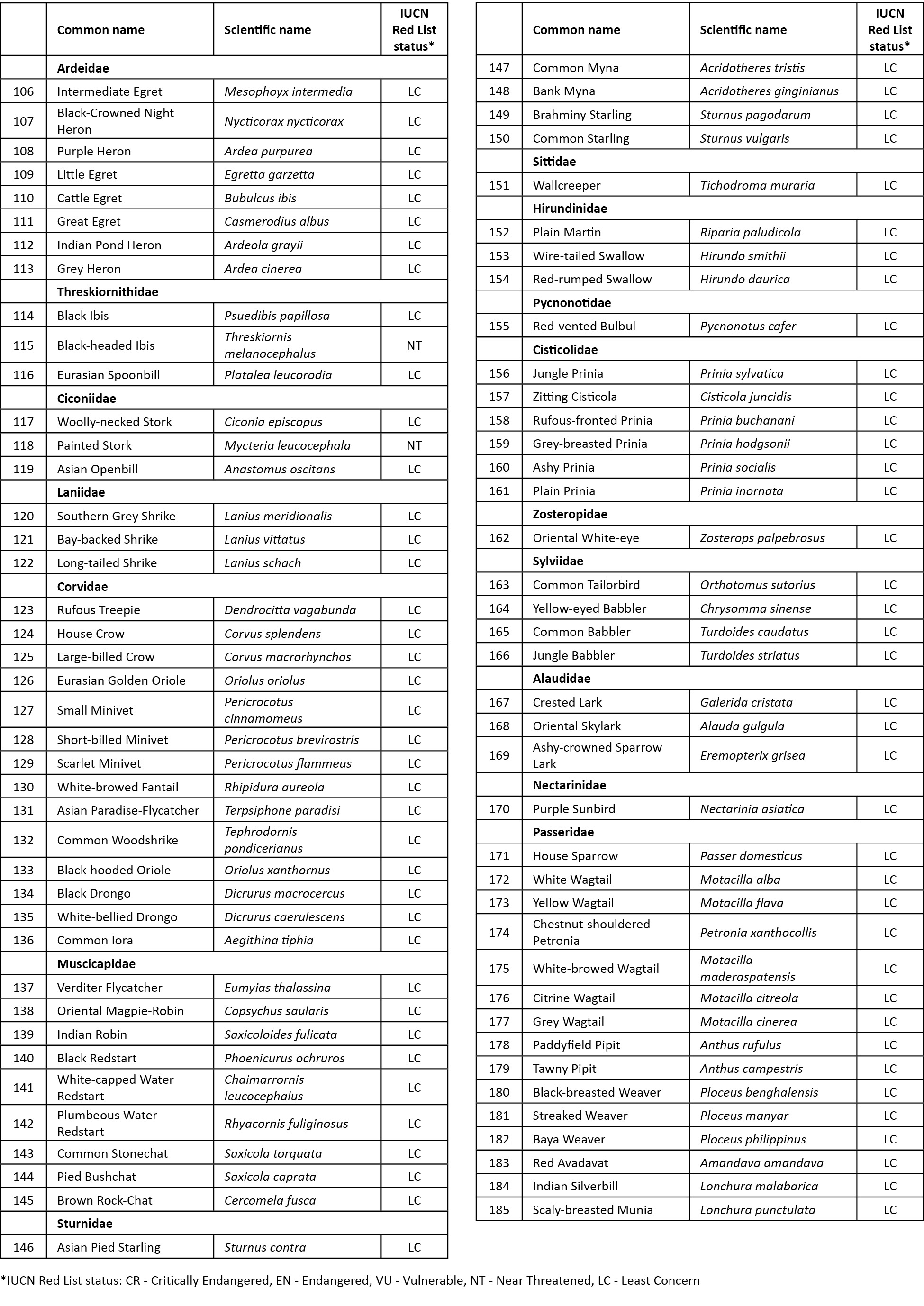Threat status of birds of Yamuna Nagar District, Haryana, India
Rajiv S. Kalsi 1, Sujata Sharma 2 & Meenu Kalsi 3
1,3 Department of Zoology, M.L.N. College, Yamuna Nagar, Haryana 135001, India
2 Department of Biology, Sacred Heart Convent Senior Secondary School, Jagadhri, Haryana 135001, India
1 rajivkalsi@yahoo.com (corresponding author), 2 sssujatasharma@gmail.com, 3 meenu.kalsi@gmail.com
doi: http://dx.doi.org/10.11609/JoTT.o4034.7024-8 | ZooBank: urn:lsid:zoobank.org:pub:ABFBDEA3-5059-4EBD-A92D-AE680041BEBF
Editor: Nishith Dharaiya, HNG University, Patan, India. Date of publication: 26 March 2015 (online & print)Manuscript details: Ms # o4034 | Received 18 May 2014 | Final received 09 March 2015 | Finally accepted 11 March 2015
Citation: Kalsi, R.S., S. Sharma & M. Kalsi (2015). Threat status of birds of Yamuna Nagar District, Haryana, India. Journal of Threatened Taxa 7(3): 7024–7028; http://dx.doi.org/10.11609/JoTT.o4034.7024-8
Copyright: © Das & Gupta 2015. Creative Commons Attribution 4.0 International License. JoTT allows unrestricted use of this article in any medium, reproduction and distribution by providing adequate credit to the authors and the source of publication.
Funding: M.L.N. College, Yamuna Nagar, Haryana provided necessary facilities.
Competing Interest: The authors declare no competing interests.
Acknowledgements: We are thankful to the Principals, M.L.N. College, Yamuna Nagar, Haryana, and Sacred Heart Convent Senior Secondary School, Jagadhri, Haryana for providing facilities.
Abstract: Birds were surveyed in the Yamuna Nagar District, Haryana, India and the threat categories of the species observed were determined with the IUCN Red List. A total of 185 species belonging to 46 families were observed. Families Accipitridae, Passeridae, Corvidae and Scolopacidae dominated the list. There were 13 species with various IUCN Red List categories. One Critically Endangered species, the Red-headed Vulture Sarcogyps calvus, and two Endangered species Black-bellied Tern Sterna acuticauda and Egyptian Vulture Neophron percnopterus were observed. A prerequisite for all the measures focussed on management and conservation of species is that the status and population trends of the target species must be known, and future work should be in this direction.
Keywords: Birds, IUCN Red List, northern India, population status, Yamuna Nagar.

The Yamuna Nagar District (3007’12”N & 77016’48″E) lies in northern tip of the state of Haryana (Fig. 1) in northern India. This district (Fig. 2) of 1756km2 area is bound by the states of Himachal Pradesh in the north, Uttar Pradesh in the east and Punjab in the west. The total human population of the district was 12,14,205 (2011 Census data). Primarily an agriculture dominant area (Total cultivated area = 1260km2, District Yamuna Nagar website http://yamunanagar.nic.in/ynr/knowYamunanagar.asp#), the district has 150km2 of forest area and 346km2 of non-cultivable area (District Yamuna Nagar website http://yamunanagar.nic.in/ynr/knowYamunanagar.asp#). Maize and rice are the main kharif crops while wheat and potato are the main Rabi crops. Sugarcane is also cultivated on a large scale in the district. The main forest types in the district are dry shiwalik sal forest, northern dry mixed deciduous forest, dry deciduous scrub forest, and dry bamboo forest. The Yamuna River and the Western Yamuna Canal flow along the eastern edge of the district. There are three seasons: the hot season starts from mid March to last week of June followed by the southwest monsoon which lasts up to September. The transition period from September to November forms the post monsoon season. The winter season starts late in November and lasts up to the first week of March. The mean maximum temperature in the months of May and June is 48.60C, and the mean minimum temperature is 6.80C in the month of January. Mean annual rainfall in the district is 1100mm. The district with its diversity of habitats and proximity to hill areas in the north, harbours a diversity of birdlife. This paper reports on some bird species found in the district along with their threat status.
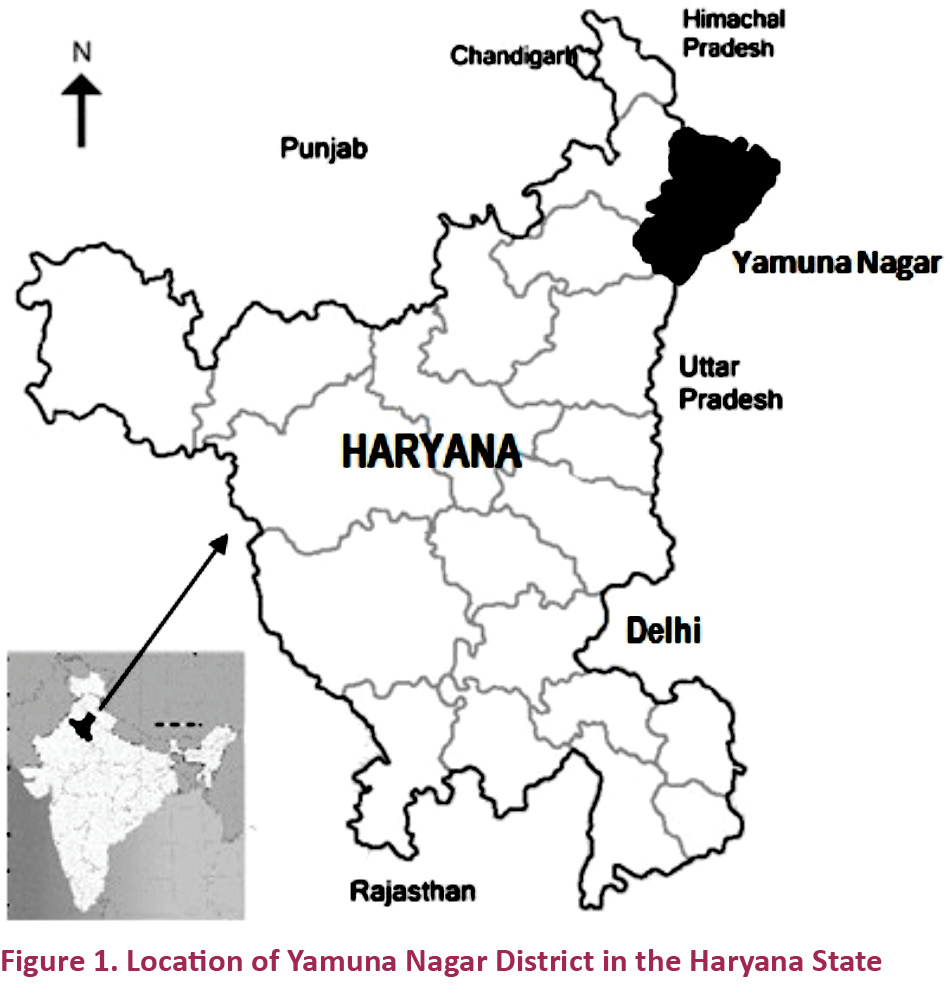
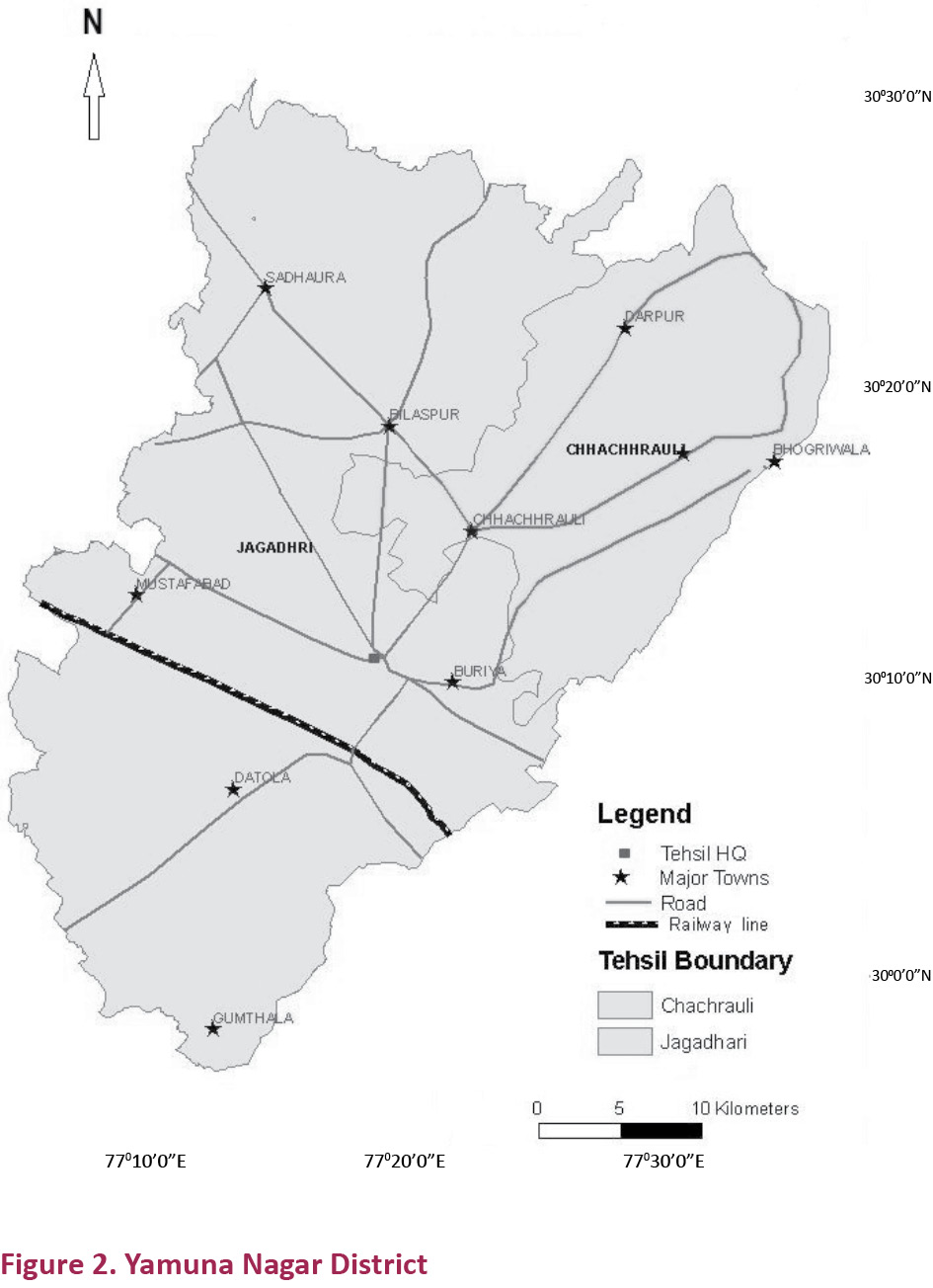
Methods
Surveys were conducted in different areas of the district in the years 2012 and 2013. The areas were selected to include diverse habitat types like forested area, grassland, agriculture, wetland, fallow land, parks, western Yamuna Canal, river Yamuna and human habitations. All the habitat categories were visited twice every month from January to December and birds were identified using a pair of binoculars (Olympus 8x40) and standard field guides on birds. During surveys, birds were identified while being stationery and while walking slowly on paths and trails through the various habitat categories. The nomenclature of various species in the checklist follows Grimmett et al. (1998), and Kazmierczak & van Perlo (2000). The reported data on threat status of all the species observed was downloaded from the IUCN Red List (IUCN 2013).
Results
We observed 185 species of birds belonging to 46 families (Fig. 4, Appendix 1). The dominant families in the list were Accipitridae and Passeridae (15 species each), Corvidae (14 species), and Scolopacidae (13 species).
As per IUCN RedList (IUCN 2013) threat categories, 13 species in the area were threatened. Red-headed Vulture Sarcogyps calvus was Critically Endangered, and two species (Black-bellied Tern Sterna acuticauda and Egyptian Vulture Neophron percnopterus) were Endangered (Fig. 3). Two species, Pallas’s Fish-Eagle Haliaeetus leucoryphus and Greater Spotted Eagle Aquila clanga were in the Vulnerable category and eight species were Nearly Threatened (Fig. 3, Appendix 1). There were 172 species with Least Concern status.
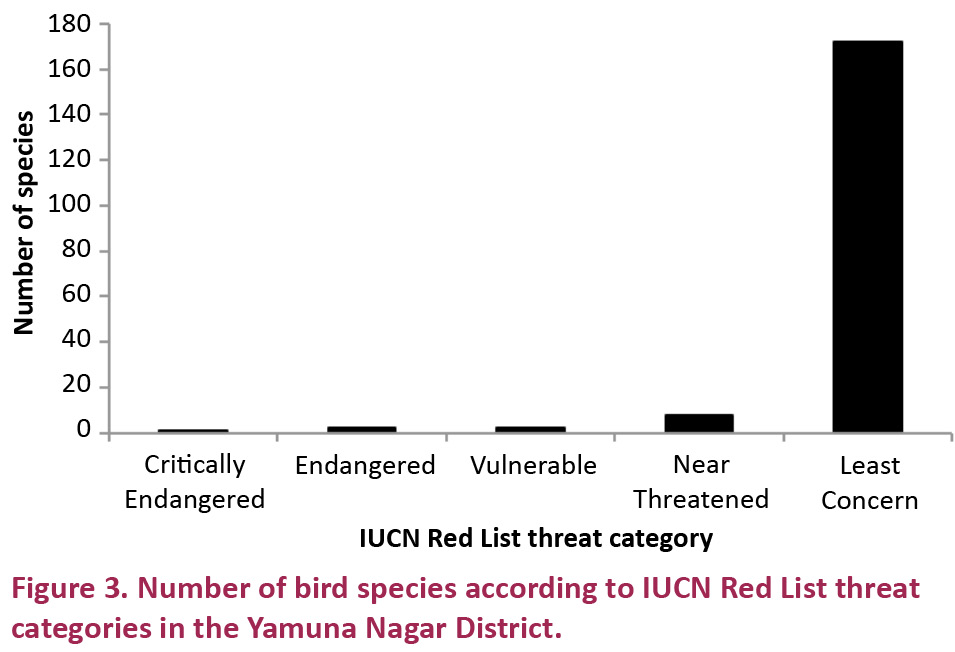
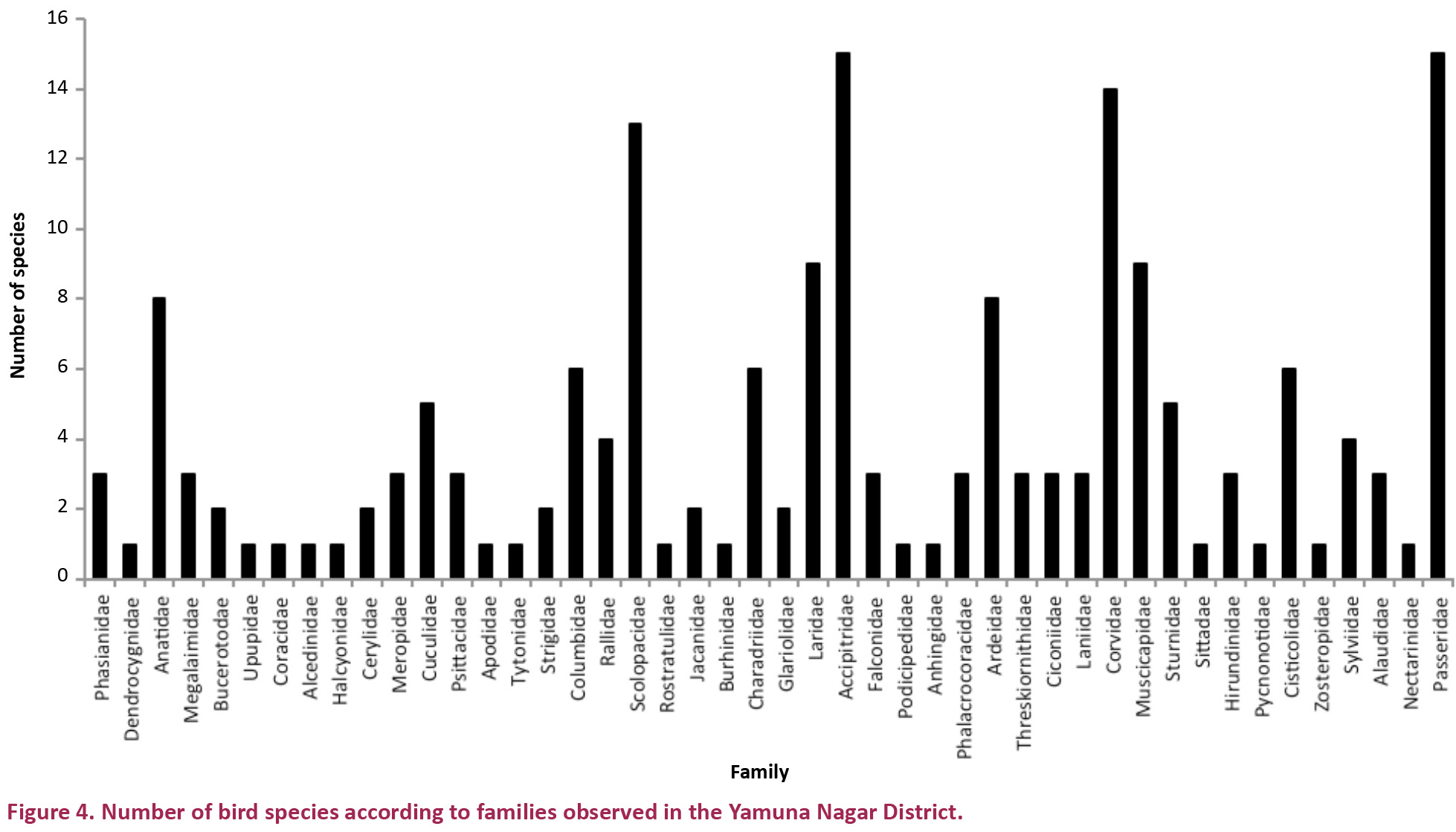
Discussion
Thirteen species with various IUCN Red List (IUCN 2013) threat categories were observed in the district. Out of these, eight species namely Black-bellied Tern, Black-tailed Godwit, Eurasian Curlew, River Lapwing, River Tern, Darter, Black-headed Ibis, Painted Stork and Pallas’s Fish-Eagle are either waders or wetland obligatory species. A majority of species were in the least concern category. A prerequisite for all the measures focussed on management and conservation of species is that the status and population trends of the target species must be known, and all future work should be in this direction.
References
Grimmett, R., C. Inskipp & T. Inskipp (1998). Birds of the Indian Subcontinent. Oxford University Press, New Delhi, 888pp.
IUCN (2013). The IUCN Red List of Threatened Species. Version 2013.2. <http://www.iucnredlist.org>. Downloaded on 21 November 2013.
Kazmierczak, K. & B. van Perlo (2000). A Field Guide to the Birds of the Indian Subcontinent. Yale University Press. 352pp.
